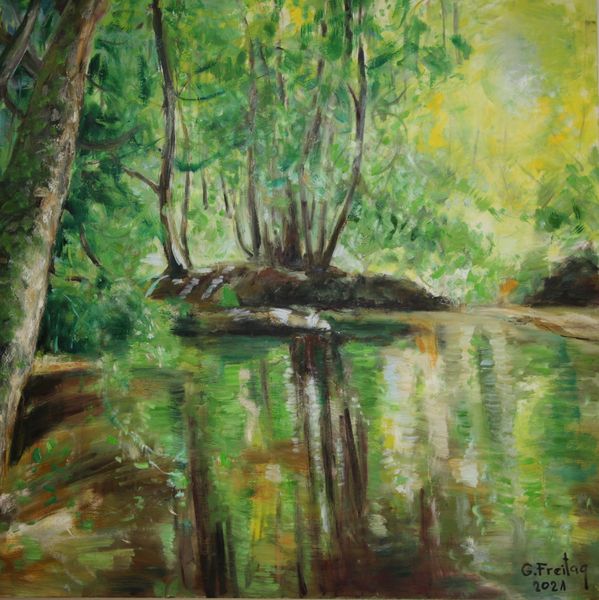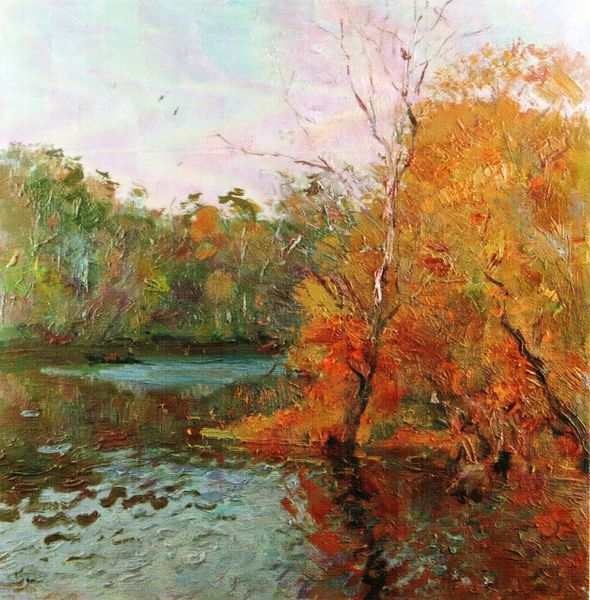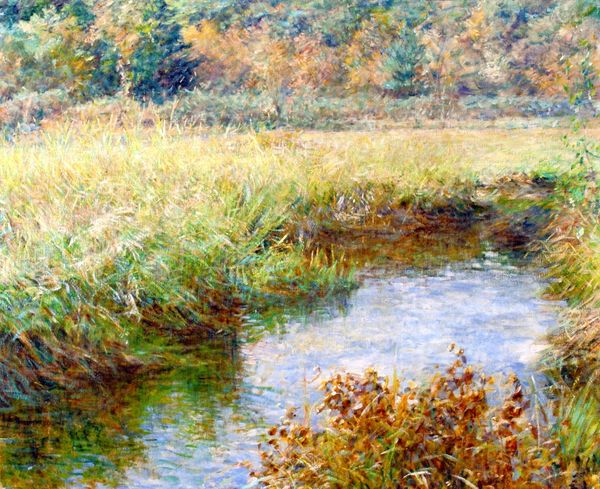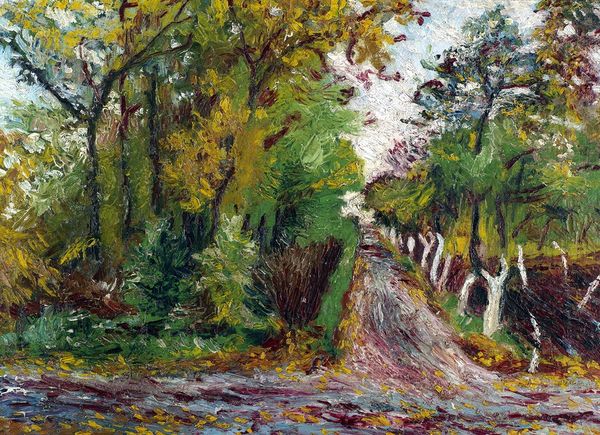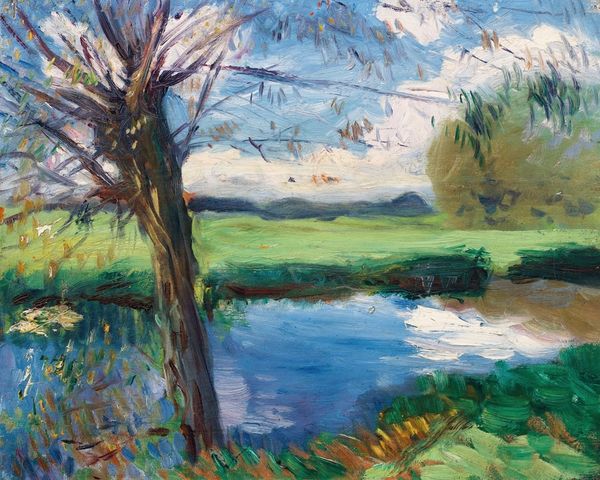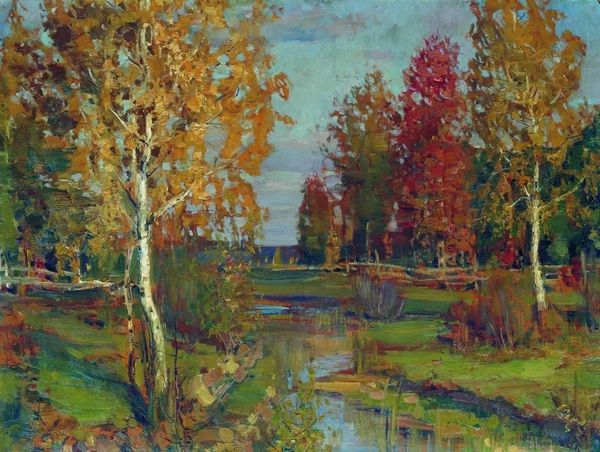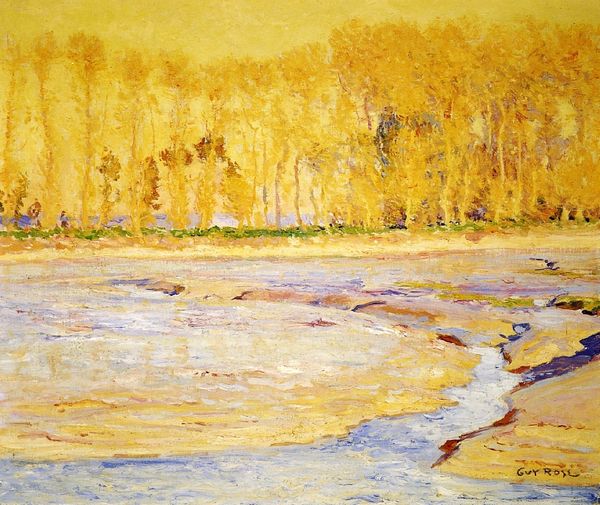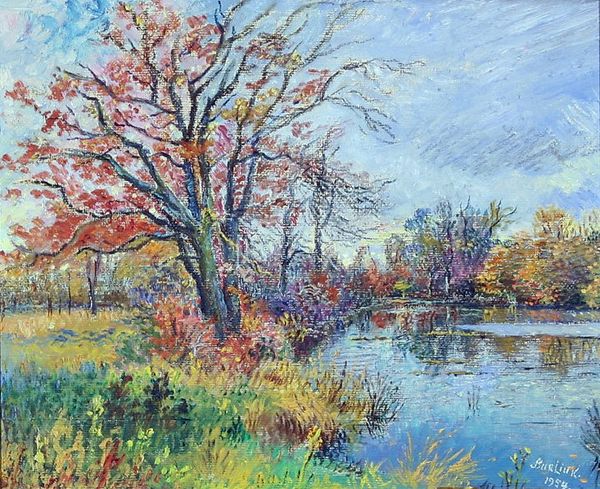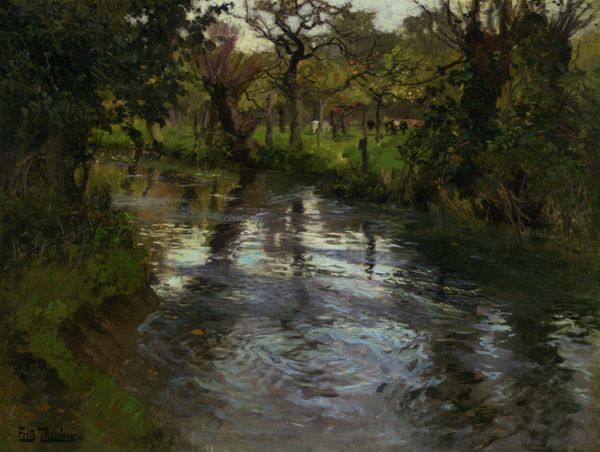
plein-air, oil-paint, watercolor
#
impressionism
#
plein-air
#
oil-paint
#
landscape
#
oil painting
#
watercolor
Copyright: Kimon Loghi,Fair Use
Curator: Here we have "Summer" by Kimon Loghi, an oil painting created with a plein-air technique. What’s your first impression? Editor: It feels like a hushed scene, all soft light and weeping willows. I'm drawn to the texture—the brushstrokes seem quite thick and deliberate. Curator: Indeed, the impasto technique adds a certain vibrancy. Looking at Loghi’s choice of subject and the light, I can't help but think about class dynamics during the Impressionist era, when leisure and the countryside became popular subjects for artists, often reflecting a romanticized view disconnected from rural labor. Editor: That's interesting. I'm more struck by the sheer physicality of it—the artist, present in the landscape, applying layers of pigment directly onto the canvas to capture that particular light. The materiality itself speaks volumes about the act of creation. The artist becomes a producer, much like the factory workers, even though what is being "produced" is vastly different. Curator: Absolutely, and the depiction of nature has a complicated legacy. I find myself wondering: whose summer is being represented here? Is it accessible to all, or does it signify a privileged escape? The romanticised landscapes were often used to reaffirm ideas of national identity. Editor: It also reflects a certain interaction between industry and nature, consider how mass-produced oil paints freed artists from relying on workshop production of medium and opened possibilities. Plein air allowed many artists to witness new relations with their labor and their medium as materials, even though that did not necessarily translate to progressive approaches towards the subject represented. Curator: The blurring of boundaries—the Impressionists' focus on the transient effects of light challenges the power structures that historically confined certain kinds of representation to specific categories or places. Editor: And yet, while ostensibly free and accessible, these materials like paints were products of increasing industrialisation and access, shifting how art production was possible. Curator: Ultimately, Loghi's landscape provokes a conversation that intertwines pleasure with labor, freedom of expression with material constraints, providing us much food for thought on the intersection between society, nature, and art. Editor: Precisely. This small scene unveils larger complexities related to the shifting materiality of art-making during a time of immense social changes.
Comments
No comments
Be the first to comment and join the conversation on the ultimate creative platform.
